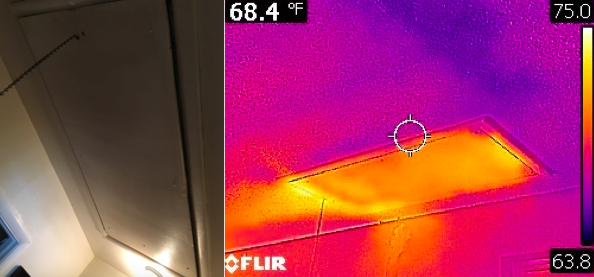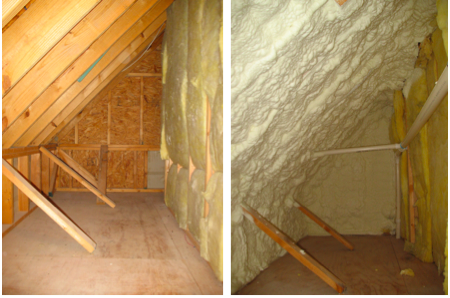As we move into the winter season, you may notice that the summer humidity is gone and the lack-their-of is now causing other types of problems. Dry indoor conditions can be just as miserable as high humidity levels, but for different reasons. When indoor humidity is low, we experience not only dry, itchy skin but also static electricity, dry respiratory pathways, and we create more desirable breading conditions for bacteria and viruses. Low humidity levels can also affect wood furniture, musical instruments, and hardwood floors.
What causes dry indoor air conditions? One of the biggest contributing factors is a leaky envelope, and to be more specific, a leaky attic. Here’s why…
Cold air has less capacity to hold moisture than warm air. This is why we see frost occur when temperatures get down around freezing; moisture condenses out of the air and then freezes to form frost. When that cold air infiltrates into a warm house through cracks and gaps, the air heats up and its capacity to hold water increases, causing the relative humidity to drop. Learn more about this phenomenon in last year’s blog.
If your home is dry in the winter, consider sealing the attic because a leaky attic turns your house into a pump for cold outdoor air.

As the warm air in your home rises, it seeps through gaps between the ceiling and the attic, such as around recessed can lights, bathroom fans, and the attic hatch, and keeps right on going out through leakage areas around the roof. This movement of air (known as the stack effect) causes cold dense air to infiltrate from cracks around windows, doors, register boots, unsealed drainpipes and water lines, etc. Some of the make-up air comes from the outdoors and some comes from the crawlspace. Pulling air in from the crawlspace leads to a host of other issues including:
- Uncomfortable drafts
- Backdrafts from gas appliances (a source of carbon monoxide gas!)
- Moisture issues in the attic caused by warm moist air condensing on cold surfaces
- Increased radon levels
- Crawlspace odors and an introduction of mold spores
Although the attic and the crawlspace aren’t directly connected, a leaky top can create enough pressure difference to pull air from the crawlspace up into the house. Sealing the attic blocks the escape route and slows down the movement of air.
Are you ready to create a healthy, comfortable home for the holidays? Contact E3 for a thorough whole-home diagnostic test. We will use our testing strategies to quantify your home’s leakage rate and identify the areas that are in need of air sealing. Give us a call to get started, 615-876-5479.










